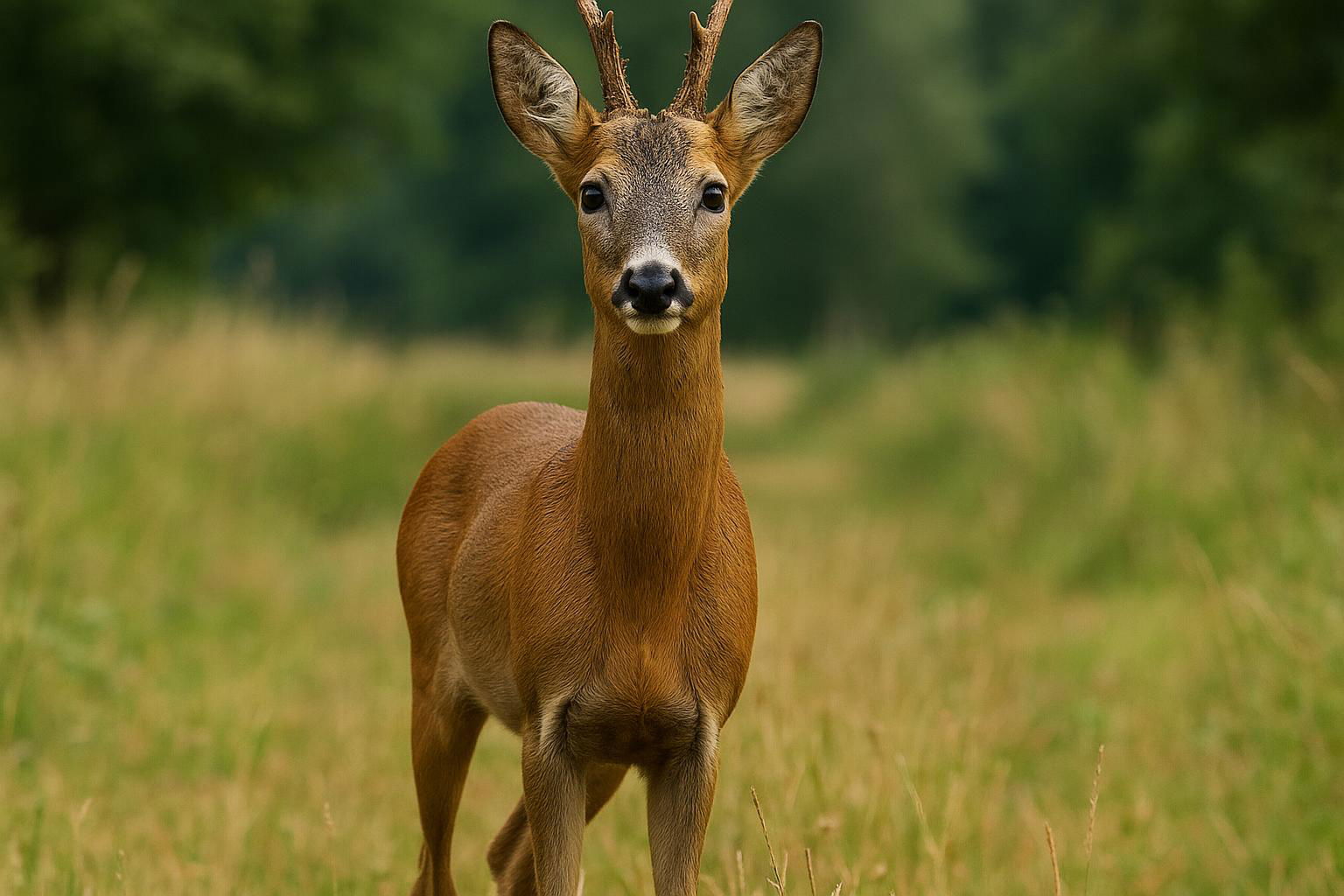
Roe Deer
Capreolus capreolus
The Roe Deer (Capreolus capreolus) is a small to medium-sized ungulate native to Europe and parts of Asia. Characterized by its graceful appearance, the Roe Deer has a compact body, a short neck, and a striking reddish-brown summer coat that transitions into a thicker, grayish coat in the winter. This species typically measures 95 to 135 cm in length and stands about 65 to 75 cm at the shoulder, with males (bucks) being slightly larger than females (does). One of the distinguishing features is the bucks' antlers, which are relatively short and usually sport three points when fully developed.
Roe Deer prefer forest and woodland habitats, often with dense undergrowth for cover, but are also found in mixed landscapes including agricultural areas. They are solitary or form small family groups, with more social interactions occurring during the breeding season, known as the rut, which peaks in July and August. Their diet is primarily herbivorous, consisting of leaves, shoots, fruits, and herbs.
Noted for their agility and speed, Roe Deer are adept at dodging predators, which include wolves and humans in regions where they are hunted. They have excellent senses of hearing and smell, which aid in their survival. With a wide range across northern Europe into eastern Asia, the Roe Deer is adaptable, but like many wildlife species, it faces pressure from habitat changes and human encroachment. Despite these challenges, the species remains relatively abundant due to its versatility and resilience.

 All Species & Breeds
All Species & Breeds
 Highland Cattle
Highland Cattle
 Miniature Donkeys
Miniature Donkeys
 All Species Directory
All Species Directory
 Highland Cattle in Virginia
Highland Cattle in Virginia
 Miniature Donkeys in Texas
Miniature Donkeys in Texas












